My favorite thing about medicinal herbs is that many of them double for beautiful cut flower arrangements. In this post, we’re talking all about how to plan your medicinal herb garden to grow enough herbs to provide everything your family will need for a year.
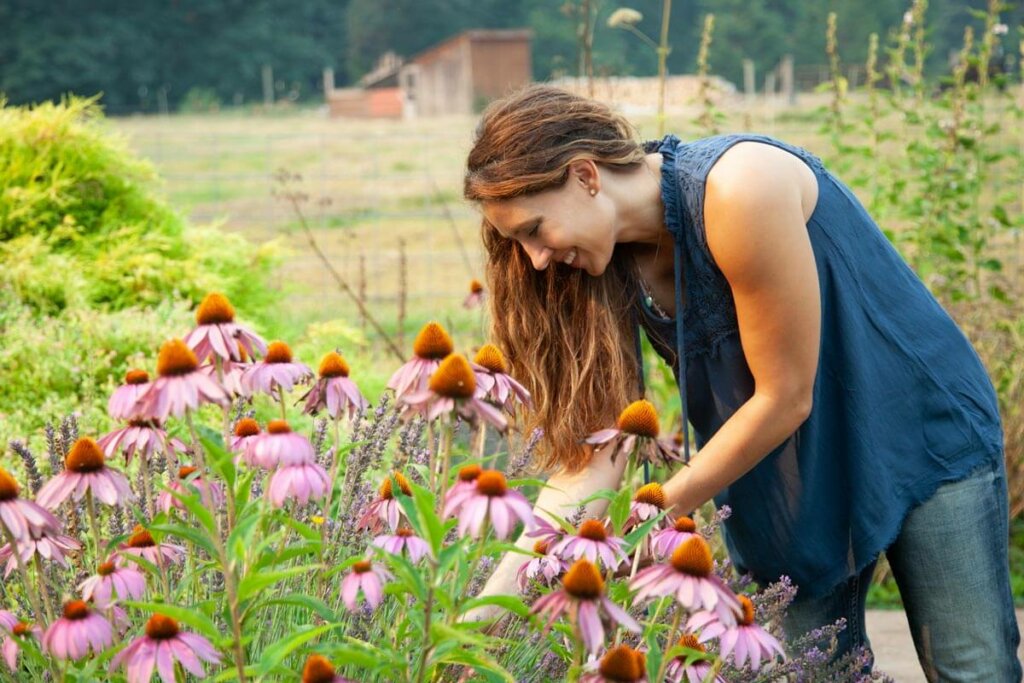
I love thinking of gardens in terms of a year’s worth of whatever it is we’re growing. This is why I help people learn how to grow a year’s worth of food in my books The Family Garden Plan and The Family Garden Planner. I also share some of my tips on planning to grow a year’s worth of food in the following posts:
- Plan Your Best Garden & Harvest for a Year’s Worth of Food
- How Much to Plant Per Person for a Year’s Worth of Food
- How Much Time Per Week to Raise a Year’s Worth of Food
- Home Food Preservation – Preserving Plan for a Year’s Worth of Food
- Planning Your Livestock for a Year’s Worth of Meat Per Person
As you can see, it’s only natural that this post would also reflect how to plan a medicinal herb garden to last your family an entire year so you can use herbs in every season.
Because I love this topic so much, I’ve discussed it many times. In this post, you’ll see two podcasts and multiple videos. Enjoy the newest podcast on planning your medicinal herb garden for a year (whether you’re growing your own or purchasing herbs in bulk). As well as the video episode of the podcast.
The second podcast is a live coaching call with Maddie, a member of the Pioneering Today Academy. We discuss how to plan which herbs to grow, how to expand her herb garden and the properties of different herbs that match her needs.
There are also multiple videos in the post where I share our own medicinal herb garden and how we’ve expanded them.
To grab the Medicinal Herb Garden eBook I mentioned in the podcast, for just a limited time, save over 35% go here
This post also includes multiple videos of the Norris Farmstead. This is the 107-year-old farmhouse that we purchased and renovated as a short-term rental. I’m listing off some of the original herbs that were in the herb garden, what herbs I’ve added and their uses, as well as the growth that a single summer can produce.
If you’re looking to purchase medicinal herb seeds to grow your own garden, be sure to check out these companies:
- Siskiyou Seeds
- Strictly Medicinal Seeds (this is a great starter set from Farmhouse Teas!)
- Seeds for Generations (search “medicinal seeds” on their website)
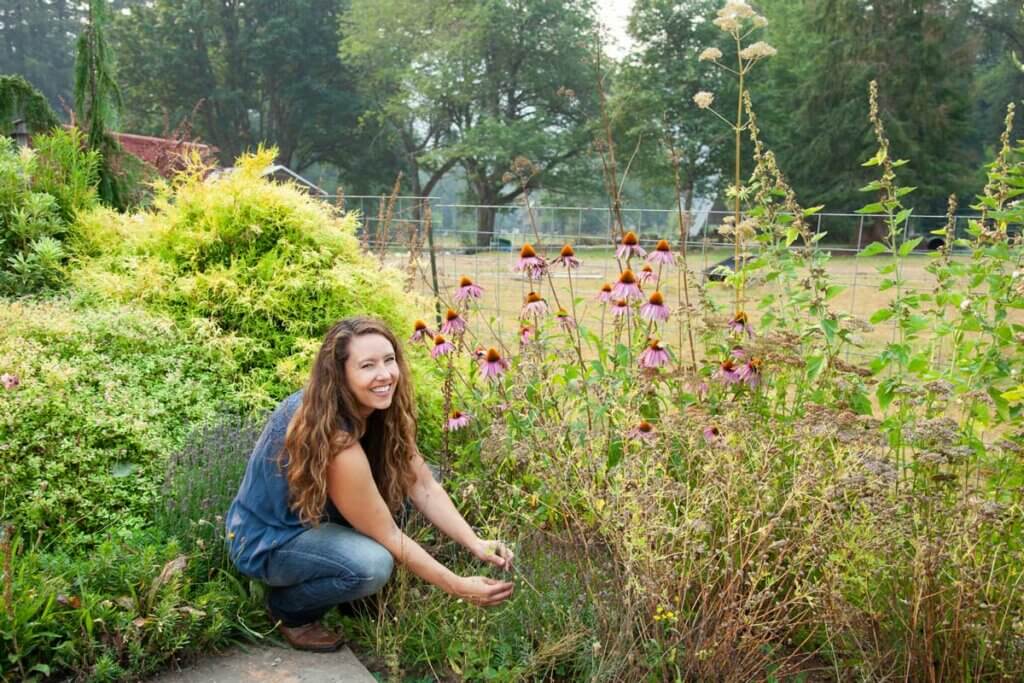
If you’d like access to the academy to learn to grow your own herbs and safely create a natural medicine cabinet from custom blended teas, tinctures, herbal salves and soaps, be sure to sign up for the Pioneering Today Academy. We only open enrollment twice a year. If enrollment is closed, you can sign up for the waitlist so you’re notified first when the doors open again.
For more information, you can check out this podcast interview I did with Carolyn from Homesteading Family where we talk about how to plan and design an old-fashioned cottage garden (aka, medicinal and culinary herb garden).
If you know me at all, you know I’m a huge advocate of using natural remedies to improve my health and boost my immune system. (I also love to boost my immune system naturally with the foods I eat.) Whether it’s making homemade elderberry syrup (or these 29 elderberry recipes) or learning more about using medicinal herbs at home, I’m always studying!
It’s important to note that I am not a certified medical practitioner. This post is not intended to diagnose or treat but is for informational purposes only. Please contact your medical care professional before introducing new herbal remedies into your wellness routine.
Why I Love Growing Herbs
Over the past couple of years, I’ve noticed a definite supply chain issue that includes pharmaceuticals. There are so many people relying on daily medications, what would they do if they could no longer get the medication they need? (Source)
This question has pushed me into diving deeper into my study of herbal medicine. I even wrote an entire post on alternative medicine and what to do if your medicine isn’t available.

Free Herb Garden Chart
I have a free herb garden chart that I put together for my own herb garden. It helps me know which herbs need cold stratification and which do not. Also which need to be started indoors and then transplanted vs. direct sown.
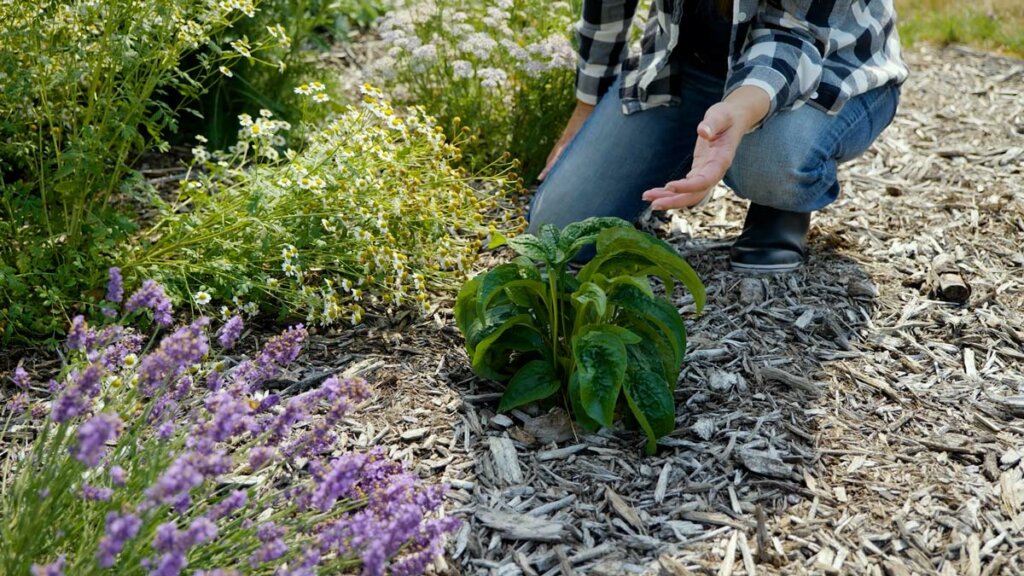
Things to Consider for Your Medicinal Herb Garden
When it comes to our medicinal herbs and flowers, many of them are perennial. This means they come back bigger and better each year, especially if you know how to properly prune herbs & perennials.
Some aren’t technically perennial, but because they’re so prolific (such as chamomile or calendula) they will reseed themselves every year and come back on their own.
Before you know what to plant in a medicinal herb garden, you need to ask yourself which herbs you’ll actually use.
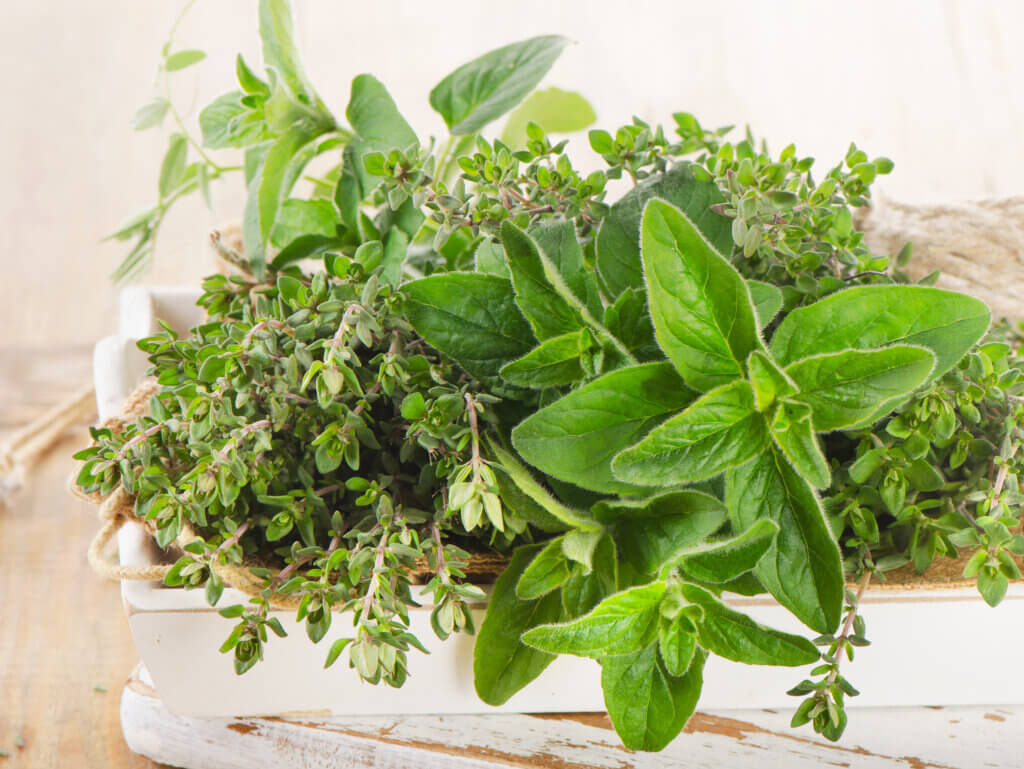
What Herbs Will You Use?
Think about the things you need on a consistent basis. For us, it’s remedies for the cold and flu, stuffy and congested noses, sore throats, earaches, and headaches.
These are the basic common cold/flu symptoms that everyone usually deals with at least once a year.
But if someone in your family has high blood pressure, and you’re not wanting to go the pharmaceutical route, then researching the herbs that can help lower blood pressure and seeing if those plants will grow well where you live is a great first step.
Maddie was interested in bleeding and wound care (for her little kiddos), to which I recommended growing yarrow. It has styptic properties, which means it will stop bleeding, but it also has antiviral properties and it also helps reduce a fever. (Source)
Each medicinal herb garden should look just a little bit different based on the individual needs of your family. That’s the beauty of these gardens, no two are alike!
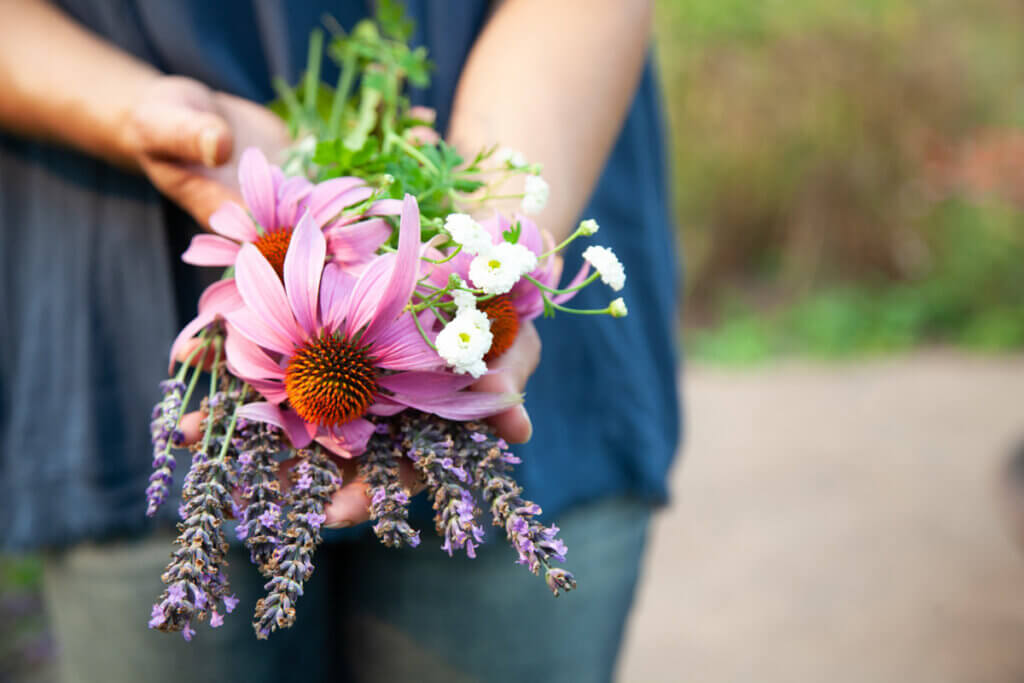
Aesthetic Appeal
Sure, this is a medicinal herb garden I’m growing, but one of the joys of growing medicinal herbs is that it can bring beauty to your yard all summer long when planned correctly!
Now that we have the Norris Farmstead and renting it out as a wedding venue, I also wanted to have the option for the bride to choose some cut flowers for her bouquet or the tables. So choosing medicinal herbs that also have beautiful flowers was important to me.
When planning my herb garden I like to have something in bloom from early spring all the way through fall. I also like to look at how much color I’m planting. I can easily tend to lean more toward the salmon pink color, so I have to force myself to take a closer look and be sure there’s a good variety.
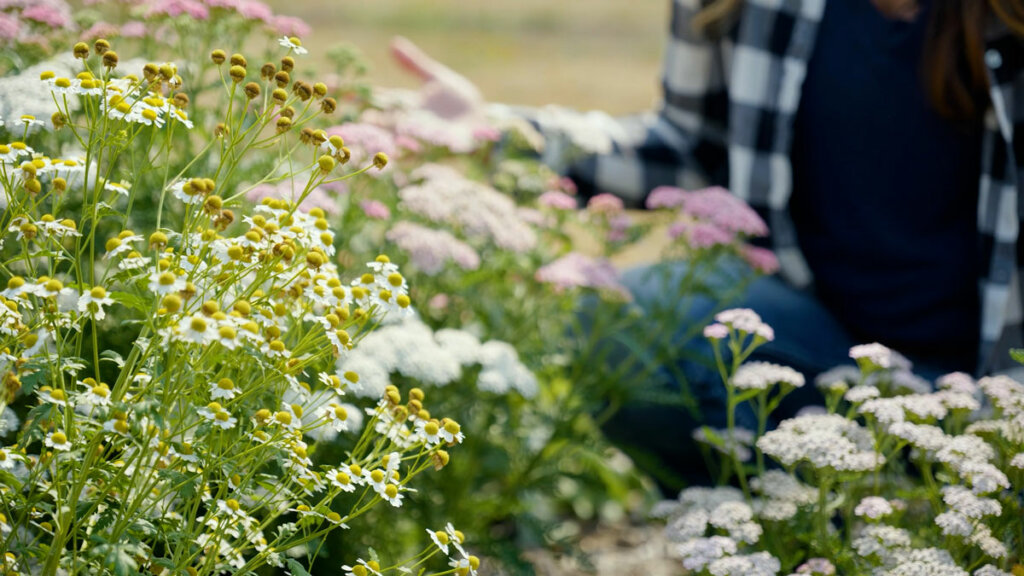
Medicinal Herbs to Grow
The following are just a few of the herbs I grow in my garden. To see the full list, download my free herb garden chart below!
Remember, you don’t have to start growing each of these herbs right now! Feel free to buy these herbs, but remember to purchase them from trusted sources. This is why my go-to for medicinal herbs is Farmhouse Teas and Homegrown Herbalist. And when I’m looking for already-made remedies, I look to Homegrown Herbalist and Azure Standard. (If you’re new to Azure Standard, you can use code “Melissa10” for 10% off your first order of $50 or more!)
- Sage – This is great for sore throats as well as culinary herbs. (Source)
- Bergamot – This is a newer medicinal herb to me, but it grows incredibly beautiful flowers. Because I knew it also had medicinal benefits, I figured it would make a great addition to the Farmstay herb garden. Native Americans ground bergamot into a powder and rubbed it on their head to relieve headaches. The powder was also rubbed over the body to cure fever and as a remedy for sore eyes and colds. (Source)
- Borage – Borage will grow very large and produce beautiful little purple/blue flowers. Use the leaves to treat coughs and digestive issues (indigestion, IBS). It’s great for cold and flu season because it helps with nasal congestion by acting as an expectorant. (Source)
- Bronze Fennel – Like other fennels, the bronze fennel has antioxidant, anti-inflammatory and anti-spasmodic properties. (Source)
- Burdock – Be mindful of where you plant burdock because it grows burrs. For burdock, you harvest the root once the plant is established. Burdock is great at removing toxins and as a blood purifier. It’s also a diuretic and is fantastic when turned into a salve for skin issues like eczema, acne and psoriasis. (Source)
- Chamomile – Most commonly known for its calming abilities, especially when enjoyed as a tea. Chamomile is also great for hay fever, inflammation, muscle spasms, menstrual disorders, insomnia, ulcers, wounds, gastrointestinal disorders, rheumatic pain, and hemorrhoids. (Source)
- Chrysanthemum – Another beautiful flower that also has medicinal purposes. In southern China, chrysanthemum is brewed into a summertime tea. It is also used to treat chest pain (angina), high blood pressure, type 2 diabetes, fever, cold, headache, and dizziness. (Source) (Source) (Source) (Source) In combination with other herbs, chrysanthemum is also used to treat prostate cancer. (Source)
- Echinacea – I love growing echinacea for both the beautiful and colorful blooms, but also to make my homemade echinacea tincture for immune boosting and anti-viral properties. (Source) You use the root of the echinacea flower, so your plants need to be established for about two to three years before harvesting.
- Elderberry – I’m a few years into growing my own elderberries, and they’re finally getting established., but you can learn how to grow elderberries here (or learn to propagate elderberry bushes for free from cuttings). One day I hope to be able to grow enough elderberries for homemade elderberry syrup, but also to be able to harvest the elderflowers for their medicinal benefits. (Source)
- Feverfew – This is a very pretty herb that grows into a pretty little flower, great for flower arrangements but also believed to reduce fevers. It helps aid the body with headaches, fevers, and respiratory issues. (Source) (Source)
- Lavender – Great for inhalation therapy to treat headaches or exhaustion. Lavender oil is also fantastic in salves to soothe skin issues like fungal infections (candidiasis), wounds, eczema and acne. Use it in a bath for joint and muscle pain (Source) and in natural insect repellent.
- Lemon Balm – Lemon balm is in the mint family, which means it will spread if not maintained. There are ways to avoid this, but it’s worth considering before deciding where to plant. Traditionally used for digestion and calming factors. (Source)
- Licorice – Harvest the root of an established plant for the medicinal benefits. Licorice root was traditionally used for circulatory, kidney, liver and lung diseases. I like to use it in my throat tea blend for sore throats. It is also a dietary supplement for digestive issues, menopausal symptoms, cough, and bacterial and viral infections. (Source)
- Marshmallow – Use the root of the marshmallow plant to help soothe irritated mucous membranes. It will help coat the lining of your throat and stomach, easing asthma, bronchitis, sore throats, cough, IBS, indigestion and skin inflammation. (Source)
- Mint – When it comes to the mint family, you really only need one plant because they’re so prolific. It might even be a good idea to plant these in a container so they don’t spread and take over your garden area. This really depends on how wild you want your herb garden to be. Mint aids digestion and can help with headaches, fever, and congestion.
- Mullein – This is great for upper respiratory issues and tends to grow well in soil that’s not ideal for many other plants. (Source)
- Oregano – You’re good with just one oregano plant as well. Once it’s established you’ll likely have enough for culinary and herbal purposes. Has anti-bacterial, antiviral, and antifungal properties. (Source)
- Skullcap – The Chinese skullcap has antiviral properties and I like to keep it on hand for cold and flu season. The American skullcap is said to have antioxidant effects (helping protect against neurological disorders such as Alzheimer’s disease, Parkinson’s disease, anxiety, and depression). (Source)
- Stinging Nettle – This may sound funny to some to actually cultivate this plant as it grows wild in many areas. But if it’s not native to you, it’s a good one to have on hand because it has so many great medicinal properties. It’s one many people will use to help aid allergies and it is packed with nutrients. Once you cook them or put them into tea, they no longer sting. You also want to harvest the leaves when they are young before the plant has flowered. (Source)
- Thyme – Just one plant will do! Once established, you’ll likely have enough for culinary and herbal purposes. Used for coughs and has anti-bacterial properties. (Source)
- Valerian – Valerian will grow very tall, and you want to get it established so you can harvest the roots and rhizomes. “Historically, valerian was used to treat insomnia, migraine, fatigue, and stomach cramps. Today, valerian is promoted for insomnia, anxiety, depression, premenstrual syndrome (PMS), menopause symptoms, and headaches.” (Source)
- White Horehound – You may have seen cough drops or cough syrups that include horehound as an ingredient. That’s because it’s great for relieving coughs and upper respiratory issues. You utilize the plant that’s above ground and do keep in mind that it’s part of the mint family, so if you don’t want it to expand, plant it in a pot to keep it contained. Horehound is good for diabetes, and digestion problems, including loss of appetite, bloating, gas, constipation, and liver complaints. (Source)
- White Sage – A calming herb that is good as a diuretic and a remedy for the common cold. (Source)
- Yarrow – Yarrow is perhaps one of the most versatile plants, and it’s great to have growing in the medicinal herb garden. It can help stop bleeding by mashing it up and placing it on a wound, so it’s great for emergency uses. I also like to use it for healing salves and cold and flu season. It also produces very pretty white flowers for cut flower bouquets. (Source)
I’m planting far too many herbs to write them all out in this post. Be sure to download my herb garden chart if you want to see the entire list!
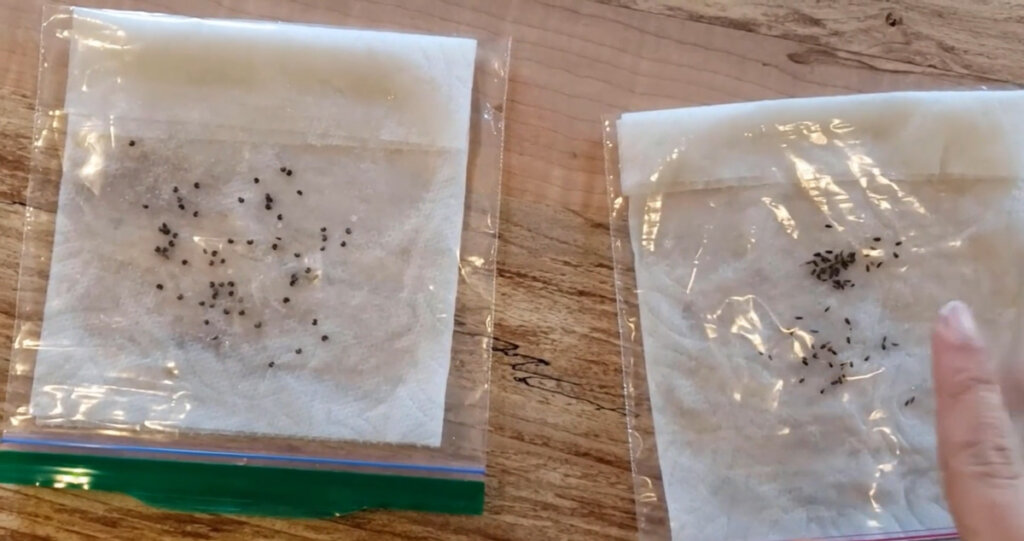
Cold Stratification
Cold stratification is putting seeds into a dormancy state with temperatures below 40° F for a specific period of time. This is to improve the germination rate (the number of seeds that will sprout). Learn more about how to cold-stratify seeds here.
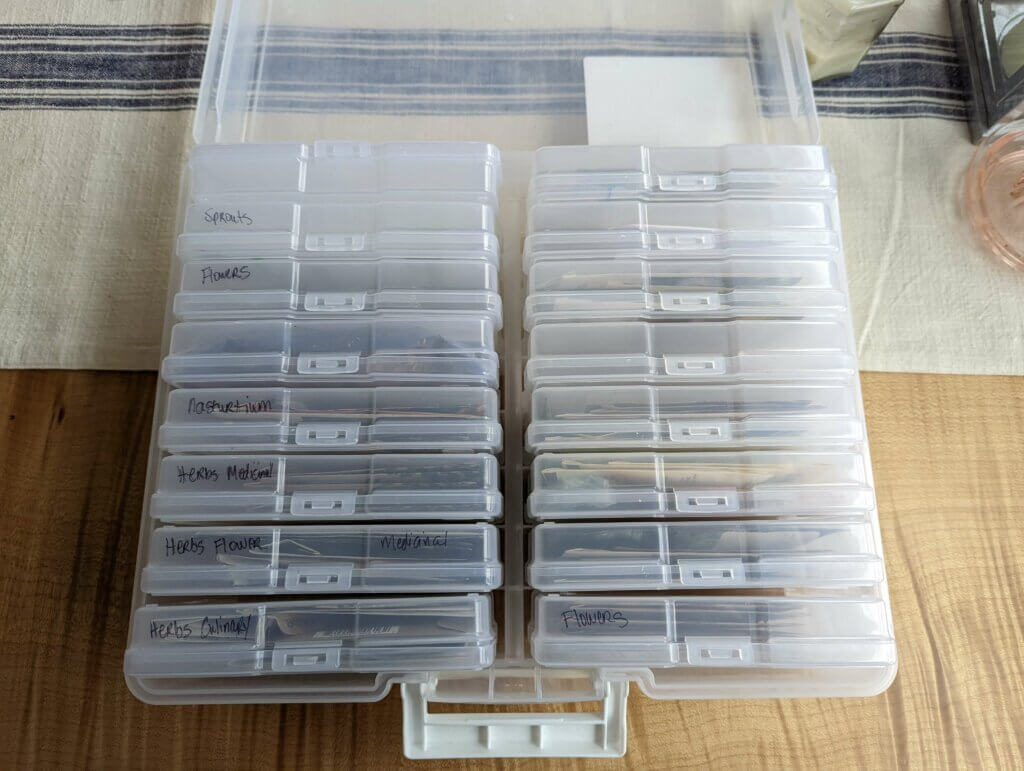
Seed Organization
When growing and expanding a medicinal herb garden, you’ll definitely want to find a way to keep all your seeds organized to plant year after year.
You can definitely save seeds from your medicinal herbs, or you can buy more seeds and keep them stored in a cool dry place.
My favorite way to do this is by using a photo case! I have an entire photo case designated for my herbs and another for my vegetable garden. Learn more about saving and storing seeds here.
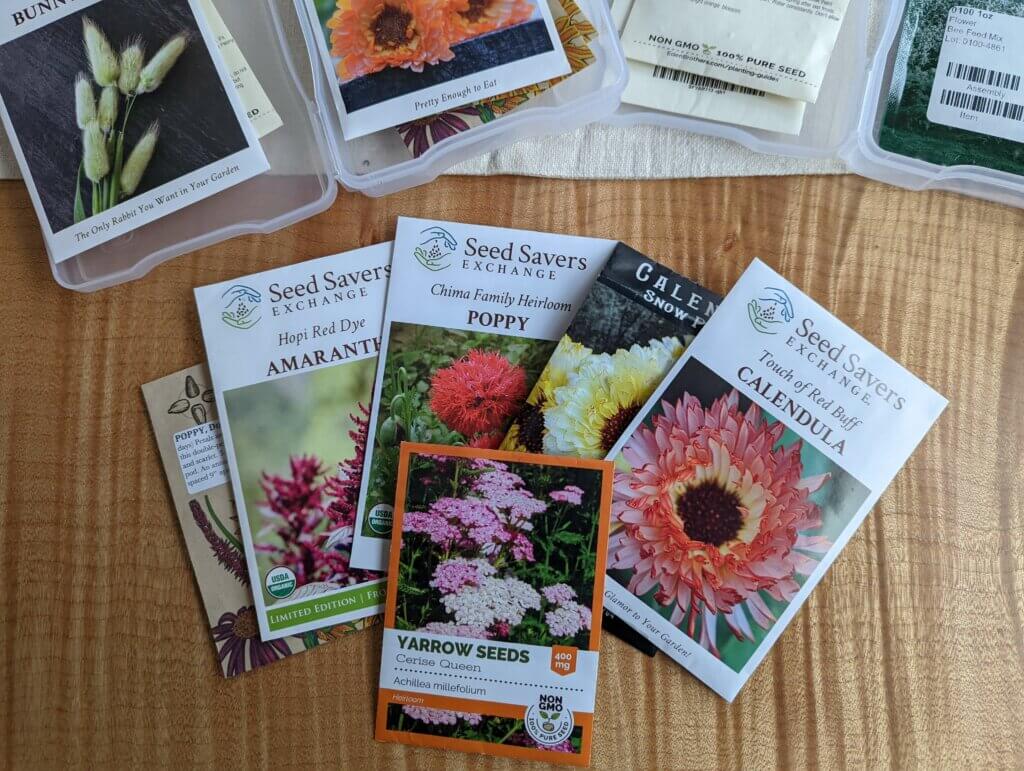
Where to Buy Medicinal Herbs?
My go-to resources are Siskiyou Seeds out of Oregon (you know how I love buying from companies close to me and my growing zone), Seed Savers Exchange out of Iowa, as well as Strictly Medicinal Seeds out of Southern Oregon where you can buy both seeds and plant starts (when they’re in stock).
Eden Brothers is a great place for buying flower seeds as well as live bulbs. Floret Flowers is great for beautiful cut flowers.
And finally, I ordered my medicinal roses from Heirloom Roses.
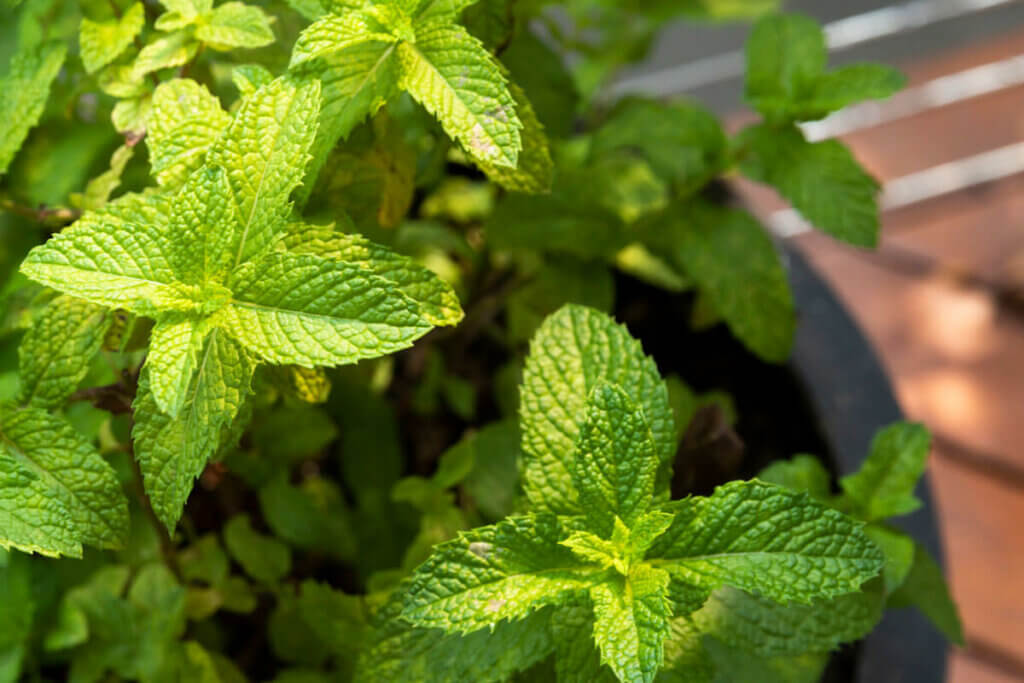
What Medicinal Herbs Grow Well Together?
Most medicinal herbs will grow well together. The best thing to consider is which herbs will attract pollinators, which plants will repel pests, and the spacing of each plant to avoid shading out herbs that need sunlight.
You also want to beware of deer in your medicinal herb gardens and consider either fences or companion planting some deer-repelling plants around the plants the deer may like.
Here is the list of deer-resistant plants we’re going to try planting (grab the planning chart here for a more comprehensive list):
- Calendula
- Horehound
- Ashwaganda
- Amaranth
- Aster
- Bunny Tails
- Straw Flower
- Mint
- Rosemary
- And other strong culinary herbs
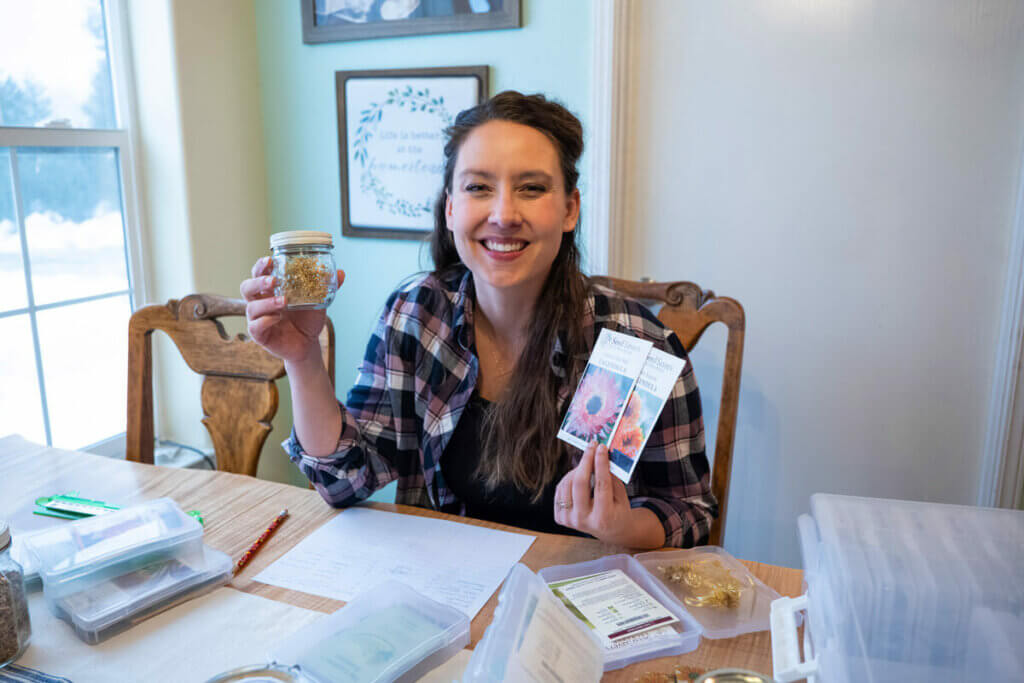
Start Now!
One regret I have about my medicinal herb garden is that I didn’t start sooner. I never realized just how much joy my medicinal herb garden brings, but I wish that I had fallen in love with the beauty of the herb garden sooner.
I also wish I would have purchased some herbal starts instead of starting everything from seed to give me a headstart on being able to harvest. You can purchase many herbs in crowns which will give you a great head start.
Don’t be afraid if you have to dig up and move a plant to a new home if you decide to change your layout. Most perennial plants are very hardy and will handle a move (once they’re in their dormancy) just fine.
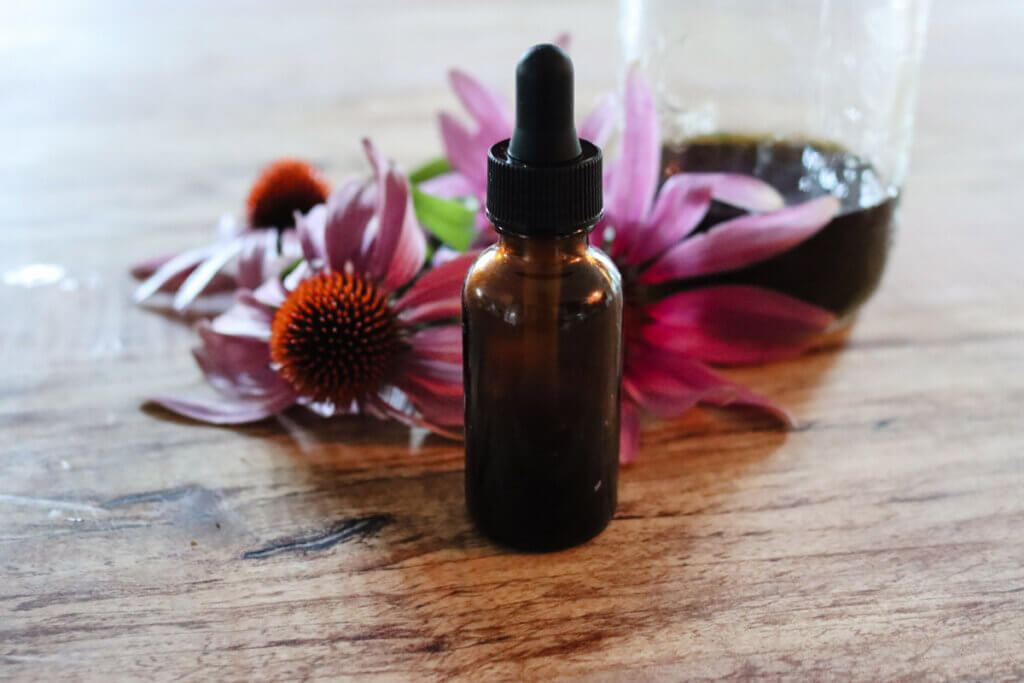
More Posts You May Enjoy
- Growing Cut Flowers for Business or Pleasure
- Herbal Home Remedies for Cold and Flu
- 7 Natural Cough and Cold Herbal Remedies
- Herbal Medicinal Tea – How to Make Your Own
- 7 Ways to Use Medicinal Herbs at Home
- Homemade Traditional Fire Cider Recipe & Benefits
- Echinacea Tincture – How To Make It & Use It
- Medicinal Kitchen Herbs (6 Herbs You Should Grow)
Melissa: Hey, Pioneers. Welcome to episode number 382. In today's episode we're going to be talking about how to create a simple and effective medicinal herb garden if you have limited space. Specifically, we're going to be going over growing herbs and the initial planning steps for an herb garden, how to narrow down those plant choices based on what your specific needs are, as well as the functionality of the growing space that you have. This is a really great episode because I know so many of you are interested in learning about not only how to use herbs safely and effectively, but how to grow them at home as well.
So, this is one of the live coaching calls that I am going into with Maddie, who is a member of the Pioneering Today Academy and we have a full herbal course inside the academy on using herbs for cold and flu, as well as lesson on how to grow herbs and how to plan out your herb garden that really go into this step by step and much deeper. Then, we can go into in just the scope of one single podcast episode here in our time together. We are opening the doors to new members, and you can get on that wait list so that you get first option when we open those doors by going to melissaknorris.com/pta.
Now, you know me and I am an advocate for raising as much of the things that you use as possible, and that includes growing your own herbs, which we're going to be talking about in today's episode. However, we're not always able to grow every single thing ourselves, not when it comes to our food. There are climate limitations and also just hours and a day limitations. And the same thing is with our herbs. There are some herbs that you're not going to be able to grow based upon climate, but they are still wonderful herbs to have in your arsenal.
And sometimes, you just aren't at the space where you can grow everything yet because our goal is for this to be a lifelong journey, not something that you feel so overwhelmed with that you end up giving up because you've tried to take on too much too soon. And that is where today's sponsor, which is Azure Standard, comes into play. Now, we are growing a lot of the herbs that we use here on our homestead. However, some of the herbs I just have not gotten around to growing yet, and when it comes to my kids, my daughter and son, if they're sick and they actually have the pain of being sick, they will definitely take tinctures.
In fact, as soon as they start to come down with something now, both the kids will come to me and say, "mom, I need some of the tea based upon this." Or "Mom, I need to take this tincture," or whatever. However, when they're not in the actual pain of being sick, they don't like to take the tinctures. They're so funny. I dilute the tinctures and they tend to want to straight shot them. I can't do that with tinctures because they're much too strong. I dilute them and I don't have a problem. But if you have children, especially teenagers, they don't always want to listen to you.
So, I have gotten some of Azure's Ashwagandha Gummies for my daughter, and I love that I have the option of high-quality herbs in a format that I can get her to take when it's something that she is going to be consuming on a daily basis and doesn't have the pain of actually being sick as the motivation to take the natural herbal remedy. Azure standard has many things that we use here on our homestead. They're one of the places that I trust and turn to for supplies or items that we aren't raising ourselves yet and growing here on the homestead.
If you are a first-time customer, use coupon code Melissa 10, that's coupon code Melissa 10 for any first-time customer of an order of $50 or more to get 10% off your first order. Okay, let's dive into today's episode. Well, hi Maddie, and welcome to the Pioneering Today Podcast.
Maddie: Hi, Melissa.
Melissa: So, today I am excited because you have questions about one of my favorite topics, which I probably say about every homestead topic because in the moment I'm completely excited about each one of them, but that is growing a cottage medicinal herb garden. So, what do you have, if anything right now? Do you have any type of cottage garden or herbs already in the yard or are we starting totally from scratch?
Maddie: So, I started totally from scratch last year. I have a little bit of lemon balm that I planted last spring and some peppermint, some parsley that'll be coming in for its second year. Really, that's about it for the herb side of things. I'm really looking this year to try and make that my main focus aside from the vegetable garden and really put a lot of my time and effort into making that the main focus this year.
Melissa: Okay, great. And then, what is your gardening zone? What's your gardening zone and your typical winter temps versus summer temps?
Maddie: So, we're zone 7a here and average first and last frosted are April 9th and October 28th. So, we have about a 201-day growing season. In the winter, it really depends. We can have really cold ice snow or it can be in the 60s and 70s and it really just goes back and forth on a whim. But in the summer, we're in the 90s and the 100s quite a bit here in Oklahoma.
Melissa: Okay. It's so funny because I'm technically gardening 7a too, but I always have to ask, because it doesn't really tell you a whole lot other than just the average lowest cold winter temperature is, but there's so many other variances in there that I feel like I have to ask for a further description to really get a feel for it. So, my next question on that is rainfall. And I know you had mentioned to me earlier that you guys have clay soil. So, I'm wondering does your soil stay soggy? Do you get a lot of rain? Do you get a lot of wet or is it more dealing with a lot of dryness and compactness in the summer months?
Maddie: A little bit of both. We've been having drought off and on pretty much consistently for the last three or so years. Last year, we had a period of, oh, maybe a month where it rained off and on in the spring and it was just soggy, sloppy for that month. And then after that, we didn't see rain for two months. So then, it was all dry and cracked and trying to stay on top of watering was really an adventure because of how dry and hot it was.
Melissa: Okay. It's funny, very similar actually patterns to us as well for as far as droughts and we probably have overall rainfall, I'm sure more than you guys, but yeah, really similar. So, okay. This is great because it gives me a lot of picking some plants that you're not going to have to do a ton of amending to the soil that should be pretty happy. And then, there's some options that of course, if we needed to bring in soil or do some more amendments that would need to be done, but there's quite a few that we can kind of pick from.
But before we narrow it down within the cottage garden and the medicinal herbs, do you have, because there's so many herbs, which is why it's so hard to know where to start. You're like, "But where do I start?" because there's so many.
Maddie: Exactly.
Melissa: But is there any particular health conditions or something like that or just overall wellness, cold and flu, common stuff that we would be dealing with most people.
Maddie: So, it's all over the board, which is part of why it made it harder for me to decide where to start because my husband has chronic allergies that he has since he was an infant and asthma that's brought on by the allergies. So, there's that condition. And then with me, I'm still nursing our little ones, so there's a lot of herbs that I just can't take being a nursing mom. And then, we're wanting to have more kids, so I'm sure there will be other times when I'm expecting. So, it's kind of like, "Well, anything I can give him, I have to really be careful with me because I can't take a lot of things."
And then, the only other one we have in the house right now is our little 11-month-old baby, so I know there's things, she's still too small, but cold and flu is a big one. I'd love to have some stuff for wound management and that kind of a thing, but definitely getting into maybe some more of the allergies and more a nutritive kind of herbs to maybe help just overall health and those kinds of things. Really, my main focus is helping him with his allergies and then just the basic cold flu and here and there type deals.
Melissa: Okay, that's great. If I had to pick just one, which thankfully we don't have to pick just one, but as I was going through this, I'm like, "If I had to narrow it down and pick just a few and quite a bit of what you told me would help me narrow that down." And actually, the first one with all the things that you just listed would probably be yarrow. One because yarrow will grow almost anywhere. It's not super picky. It will survive the droughts. We get a ton of rainfall and sometimes they're just completely saturated and my yarrow just keeps on giving. It tends to grow really in any of those conditions of the yard. But one of the things I love about yarrow is it's so versatile.
So, yarrow of course is great for wounds. It's an antiseptic, meaning it can help if you have too much blood flow, obviously from a cut, that type of a thing. So, it's going to help with that. It also has antibacterial, it has antiviral, so it can be used both with wound management from helping to fight against infection as well as helping to stop the blood aspect. And then, it also can help as far as coughs, colds, immune system because it does have antiviral properties in it. And then, one of the ones that I have in our temperature chamber tea blend inside the cold and flu course. And that's because yarrow helps to induce sweating, which then helps to reduce body temperature. And of course, if you've got a fever that it's going to help bring that down and help if the fever is caused from a virus.
So, yarrow is one of my favorites because it has so many different multiple purposes. And yarrow can actually be really good as well, it wasn't one that you mentioned, but it's one that's often used for cardiovascular systems so that it can be great for those aspects if somebody is having heart, hypertension, like that. And of course, I should say in the course of this as you're listening, anything that we're sharing is not to be taken as medical advice individually to anybody who's listening. You have to do your own research and know the precautions and yarrow was one that you should not actually be using during pregnancy. So yeah, it is compatible with breastfeeding, however, so just not during pregnancy.
But anyhow, though you were talking about allergies and yarrow is not one that has cross allergies to ragweed or the daisy, the Asteraceae family. But one of the other ones that I really like is chamomile. So, chamomile is great. Again, it's very gentle, but if you have any allergies, so I don't know if you know, I haven't narrowed down if your husband's done allergy testing. But if he's allergic to ragweed or anything in that Asteraceae family, then he may be allergic to chamomile. Not everybody, but it's one of those definitely want to pay attention to.
Maddie: Right. Okay.
Melissa: Yeah, and you know what? I was actually looking at my lactation category C under chamomile is compatible with breastfeeding. I do have under yarrow, it's not to be used with pregnancy, but I need to actually double check if yarrow is okay when you are pregnant.
Maddie: I think chamomile is one that you're not supposed to take during pregnancy and I know yarrow is one you're not supposed to take during pregnancy.
Melissa: Yeah. I know it's not during pregnancy, I'm just not sure as far as the lactation, if it comes through, if it comes through the breast milk, which chamomile is lactation category C, which is classified as compatible with breastfeeding. But I don't have that under yarrow, so I need to double check that one. But those are two, and chamomile also has anti-inflammatory properties as well. So, we were talking about wound management, that type of thing. Overall inflammation is obviously not a fun thing to deal with, so it can help with that. And then it's also really nice because it has those calming properties, it's very well known for sedative calming properties, which is why a lot of people like to take chamomile tea at bedtime.
And it's also a really easy one to grow, especially the German chamomile. It will just reseed itself and I really like the non-fussy herbs that once I have them planted that they pretty much just perpetuate themselves and I don't have to do anything really to them. Each year, they just keep coming back. So that's why chamomile's one of my favorites for that, plus it's so dainty and pretty. There's something about it.
Maddie: It really is. Yeah, they're so cute.
Melissa: They are. They make you smile. They're so cute. So, I really enjoy chamomile for that part. And I have to say along those lines, so I know this was not, what we were seeing is yarrow always actually dries really well and it looks so pretty in floral arrangements. I actually, ended up putting in extra yarrow into the cut flower garden because it will last a long time in the actual bouquets when I have the fresh flowers in the summer months. But then, it dries really well, and so I ended up using it in some of the dried floral arrangements to take us through the winter months. So anyways, it also works very well for that as well.
Maddie: That's awesome. I'll have to keep that in mind.
Melissa: And then, as I was thinking as I was going through the list, one of my other favorites of course is Echinacea. Echinacea, again, is one of those that has multiple purposes. It's pretty easy to grow. Its native environment was in a prairie type environment, so it will go through drought issues pretty well. Definitely, it will make it through winters in 7a and even down into the colder zones. I think it's down to zone three and four that it will go. So, it has a versatile range as far as growing.
And of course, Echinacea is really well known for its properties to help boost the immune system. It actually does have some antiviral properties to it as well. But one of the things about Echinacea is for as far as helping to boost the immune system, you know can use it any time for that. But as far as it's actual, and a lot of time, and I did not know this for a long time, I'd always just heard people say, "Oh, if you have a cold or a flu or something like that, you should use Echinacea." But when it's in specific like that, when it's working as an antiviral property, it only works when it comes in direct contact with the virus and that's before it actually has entered into the cells and has started to replicate.
So, Echinacea does have those antiviral properties and if you take it at the beginning when you first are beginning to feel symptoms, which is usually before the cell has fully entered into, especially if you can drink it as a tea or a tincture where you've got the virus in the throat and in that area and it can code it, then it works really, really well. If you have full-blown cold symptoms or full-blown flu symptoms, it can help with the immune system response, but it doesn't actually have then the antiviral properties that it does taken at the onset. So, I found that very helpful because I did not know that. When I learned that, I'm like, "Oh, I find that fascinating."
But I do like Echinacea too. Again, actually it makes very pretty flowers and bouquets. It's really easy to grow and the only thing with Echinacea is a lot of times, people think that you only can harvest the roots or that all the medicinal properties are in the roots. Now, it's the strongest medicinal properties are in the roots, and you do need to wait until the plant is about two to three years old for the roots to be large enough that you can take part of them or large enough to bother harvesting so you don't harvest everything. But actually, the aerial parts of the flower and the leaves, all of those, if you take them when they're fresh to make an alcohol tincture out of them when they're fresh, they do have medicinal properties.
Now, is it as strong as what you have in the roots? That's kind of debatable. But the key there is not to dry the Echinacea and then tincture it. You want to make sure that you're tincturing it when it's fresh because that's where it has those antiviral properties for the tincture. Once it's dried, it's not as potent as when it's fresh.
Maddie: Is that the same for the aerial parts as well as the root or is the root okay dried?
Melissa: No, the roots are okay dried from my understanding. It's just, yeah, it's just the fresh parts, it's just the aerial parts.
Maddie: The aerial parts.
Melissa: Yeah.
Maddie: Okay.
Melissa: So, your leaves, your blossoms, that type. Yeah.
Maddie: Cool. And is that one, I'm trying to remember. I know I think it's elderberry, but is Echinacea is the one where you have to worry about with cytokine storms? If you're getting into actually having the flu settle in and you're actually sick, if you are obviously starting it early, it helps. But is that one of the ones you have to watch out for as you get further into the flu as it progresses with the cytokine stuff or was that one that wasn't a concern? I'm trying to remember.
Melissa: Yeah, that's a great question. And when COVID-19 first really, when we first all found out about it, right? Elderberry, that was a concern that a lot of people had and expressed about not being sure if you could use elderberry because of possible cytokine storms. But we have a lot of herbalist who went in research and cases and found that it's really not a concern. It was one of those things where one person posted possible to be aware of, and then everybody just ran with it.
Maddie: Fair enough.
Melissa: Yeah, but it's good if you don't know. I'm kind of always let's proceed with caution until we know for sure. So, I don't think it was a bad thing, and I think it actually made a lot of people more aware of elderberry and using herbs and hopefully didn't scare them off, but just brought that awareness that it can help.
Maddie: Exactly. Yeah.
Melissa: Yeah. And it was actually, the American Botanical Association did a really great in-depth study, had multiple certified herbalists on going over that way that elderberry is not a concern for cytokine storms. It's more of a modulator, and it wasn't something to be worried about, but I'm glad that you brought it up. So, to my knowledge, I have never heard that about Echinacea. I did hear it about elderberry, but dove into that and not a concern, but good thing to bring up.
Maddie: Yeah, cool.
Melissa: And elderberries is actually, it was perfect segue because elderberries would be one of my next ones just because as far as lot of really fabulous nutrients, elderberries, it's medicinal but also a food, so you can make elderberry syrup. You can, of course, make elderberry jam, there are those ways. And so, people will consume elderberry, especially if it's a syrup, especially with kids, at least. Maybe it's just my children that are picky. I know yours are really little, but even as they got older, they tend to be a little bit pickier, but they're much more apt, even now as at 17 and 13 years old to take elderberry syrup than they are a tincture, which I get why. Because tinctures, if you don't dilute them enough, they're not necessarily pleasant tasting.
Maddie: Yeah, no, yeah. My husband's first experience with tinctures, I warned him, but it was a funny time. It was very comical because we have very different modes of taking it. My husband's like, "I'm just going to get it over with. I don't want to prolong it." And so, he just takes the dropper full and just drops it on in his mouth and goes. I'm like, I cannot. I have got to dilute it in water, even if I can still taste it. I still taste it a little bit. But I'm like, "I don't know how you straight shot it like that." Oh yeah, no, that that's what he did. And he regretted it immediately and I felt so bad, but that's how it goes. Yeah, it's all this style, right.
Melissa: Well, it's really funny too because my daughter is 13 and I was giving her some tincture. She was dealing with some cold issues. She kept having it, kind of reoccurring, and I'm like, "You really need to get your immune system up," giving her the whole mom spiel. And so, I said, "You really are going to need to take this tincture for a few days and you need to take it even the next few days after you feel better." You keep getting sick and it's because the first day you don't feel good, you'll take the tinctures, but then you don't continue with them.
Anyhow, so it was really funny though, because she took the tincture and she's like, "Oh, Mom, it just tastes so awful. Don't you have any tinctures that don't taste bad, any other herbs that don't taste bad?" And I'm like, "Honey, it's not the herbs that taste bad. It's the alcohol." And she's like, "Oh, you gave me alcohol?" I'm like, "Maddie," her name is Maddie too, which is really funny. I'm like, "It's 15 ml. I'm not actually giving, I mean, technically yes, it's alcohol, but I'm like, I'm not really giving you, I'm not going to allow you to drink alcohol."
Maddie: It's medicinal. It's not for recreation.
Melissa: Right. It was so funny though. It was like she didn't put the two together yet, but it was great because I told her, I'm like, "See?" I said, "Alcohol tastes absolutely disgusting. Why would you ever want that?"
Maddie: The good teaching moment.
Melissa: It worked well. It worked well, yeah. For my 13-year-old, it works really well. So anyways, yeah, kind funny little off offshoot about tinctures. But yeah, back to that is, elderberries are great. And the other good thing about the elderberries is the elderflowers. So, when you're growing it yourself, you can obviously harvest the elderflowers and they have some really good medicinal properties with them as well. And some of that is carried over into the berries, but elderflower can have really great properties on its own too. So, you can dry that. You can make elderflower tincture, elderflower tea. And then, let some of them ripen into the berries to then make syrup and stuff. So, it's a great one.
The only caveat with elderberry is you do generally need two different varieties in order to get your pollination. So, we had put in two different Sambucus nigra, and you can also get Sambucus canadensis. And both of those are elderberry, one is European, one is American. They both have medicinal properties to them. We just tend to have more studies done on Sambucus nigra because Europe actually uses herbs a lot more than America does. So, we just got a lot more data on that one. But a lot of the studies show that Sambucus canadensis also has the same medicinal properties. But if you want to make sure that you get two different varieties of Sambucus nigra or two different varieties of the Sambucus canadensis, as far as Latin names go to make sure they pollinate.
I had bought two. And one of the elderberry plants really struggled, which was interesting because they were only planted, I planted them about 10 feet apart from one another, so relatively close. And one of them did phenomenal and the other one just really struggled. It was almost like the leaves just got burnt, even though they were both in the same amount of sunlight. Everything was the same as far as that goes. So, I ended up having to transplant it, which of course took it back a year as far as growing in size, but I transplanted it to where it got afternoon shade, but it got full morning sun.
And the moral of that story is, so the first one reached about two years beforehand the size where it would produce berries because usually it takes it a couple of years before it's going to start producing the blossoms and whatnot. However, the pollinator variety that I'd gotten because it had gotten so damaged from not being happy in that spot and the transplanting, it didn't produce any blossoms. And so, I knew I wasn't going to get any berries. I did leave a couple just like, "Well, maybe there'll be enough of an elderberry somewhere nearby, in somebody's yard or field."
Maddie: Sliver of hope.
Melissa: A sliver of hope, but I can harvest the flowers. So, it wasn't all was lost. I still didn't get any berries. So, I was still able to harvest the elderflowers and make tea and dry those and get the medicinal properties even though I didn't actually get the elderberry syrup. So just in caveat, if someone is like, "Oh, I don't have a pollinator," and that explains why I'm not getting berries. One, get a pollinator, get another variety. But two, if it's going to be a little bit or you miss that window, still harvest the blossoms because they have a lot to offer there.
Maddie: Very cool. So out of curiosity, when you're going in and you're planting and getting your garden space all figured out, and how many of you want to plant all of that, how do you determine that? I know there's formulas and everything when you're trying to do your vegetable garden, how much you want to preserve and all of those kinds of things. But when it comes to medicinal herb gardens, I don't know, maybe I just freeze and it's really simple and I'm just making it way too difficult.
But I'm sitting there going, "Okay, well how many would I really need to plant practically speaking in order to get enough of a harvest that would last me essentially a year or even just a couple months just to get started and dive into it kind of a thing?"
Melissa: Yeah, that's a great question. And I think a lot of people struggle with that. I mean, because if you've never grown those things, how do you know unless you've forgot somebody who can tell you from experience or give you some averages. And we have so many people that grow vegetables that there's just a lot of that available information out there. It's easy to find that type of thing. But not as many people though we are making a dent in that grow their own medicinal herbs. And just because there's so many different herbs, it's harder to narrow that down to get those averages.
But that being said, for elderberries, once the elderberry reaches its full maturity and that's going to take some years, but one elderberry plant, even though you do need to sit in order to get berries, that's going to be plenty for a family. If you have two elderberry plants for a year, you're going to be good to go, if it's just your family provided it's happy and producing normally and all of those types of things, you're going to get quite a bit of harvest off that. And then, for the other herbs, part of it is of course how many people in the family, how often are you using it.
But you know, really don't usually need a ton in order to make tinctures. And tinctures are so concentrated and you're not consuming usually a large amount of them that you don't really need as much as we think. Especially if we're looking at vegetable garden size and then you're thinking along the same lines in your mind as size, you don't usually have to have nearly as many herbs. And then again, if it's harvesting the root portion of it, then you're going to need more plants because you're actually taking the root out of the ground and therefore you're taking away part of that plant for the following year.
So, I feel, like for Echinacea, if you want to be harvesting the roots, marshmallow, which is another one I really like, the marshmallow plant. Those ones you are going to be harvesting the root at about year two and three. So, you want to look at that and then plan on either stagger growing them. So, every year you're adding a new plant so that when you get to harvest the root, you've got one that's coming up behind it for the next year to take over it or you're going to want to plant it probably double or triple because every year, once you harvest that root, of course you're dwindling down what you're able to harvest for the following year.
So, that makes it a little bit of knowing. Are you root harvesting? Are you aerial parts? Maybe a combination of both. But then again, I mean really with the Echinacea, I mean it is beautiful. It just is gorgeous out in the garden and the bees love it and I always have butterflies on ours. But really, you probably would have enough, especially for just fresh part aerial tincturing. I mean two plants is going to be completely sufficient. For the root harvest part, I would probably say put in at least three plants and then plan on the next year maybe putting in two just so you do have that stagger part. And then obviously when you dig up that one plant, then you'd have the space to just put another one in, but you'd have to stagger them. As far as things like in the mint family, you were mentioning lemon balm and peppermint, those types...
Maddie: Those things just grow like crazy.
Melissa: They grow crazy. You really only need one. Really, I've got one oregano, I've got one thyme, I've got one peppermint, I have one lemon balm. Of course, the lemon balm, I let some go to seed and now I've got lots of little baby plants that have popped up and I'm like, "Ooh, do I let you grow or do I take you out?" We haven't decided yet. So, anything in the mint family, I think you're really, for most families, one plant, just because they are so prolific, you're probably going to be fine. I would say two max, and that's just going to depend on the family size and if you're using it more.
And some of it too is looking, which probably doesn't help, but it does help with the evaluation part, is this an herb that you're using acute only for acute symptoms when you are sick with something or when you're having an allergy flareup or is it something that's chronic? And so, you'll be using it on a daily basis because of course you're going to go through a lot more of that than you are something that you're only taking when you're experiencing symptoms in most cases. So for cold flu type symptoms, those types of things, really immune stimulants, I don't use immune stimulants all the time. I don't think we need our immune system in hyperdrive that actually can be dangerous. You know I hate to use the word dangerous, but that cannot be.
Maddie: That's not a good idea.
Melissa: That cannot be a good thing all the time, right? Yeah.
Maddie: Yeah.
Melissa: So, I tend to not use the immune stimulants all the time. I don't always need my immune system in hyperdrive, only if I really feel like I'm starting to come down with something. But adaptogenic herbs, of course, like Ashwaganda and some different things like that, you would be using more on a daily basis or at least for a few months, that type of thing usually. So just thinking about that, is this something I'm going to be using a lot of, I'm going to be using less of. And one of the other herbs that I wanted to mention too, especially because of upper respiratory issues and you mentioned asthma and respiratory when you're sick and whatnot, and also something that grows very well in poor soil conditions and drought is mullein.
And you may have mullein already growing around you that some parts of the country, it's just this prolific thing and people are like, "Why on earth would you grow that? You can go to any field and find it." But that's not the case for every geographical location. It's not the case actually in mine, on our side of the mountains. We're a little too wet for it to self-populate. It does in a little bit drier areas, but it grows really well in gravel because I had purposely planted a mullein and stuffed with the seed, [inaudible 00:33:41] to the gravel and it was very, very happy in our driveway. Not so great though because it kept getting ran over, so I did transplant over.
But mullein could be really good for, again, the really the upper respiratory issues. Mullein is really well known for that. So that might be one that would grow well too in the not as ideal soil parts and when to consider. Yeah. And then, this one is going to sound funny as far as actually cultivating because for folks who are listening and it just grows everywhere, you're like, "Oh my gosh, why would someone plant that?" But if you don't have access to it actually has a ton of wonderful properties to it, both medicinally.
But as you were mentioning, the nutritive part, and that's Stinging Nettle. So, I know you've got littles and it just grows wild here. We have it all over and I have to tell you, as a child, it was the first plant that I ever learned to stay away from. You get stung once and you're like, "I remember you. I know you," and you'll stay away. So, you might want to plant it in an area that maybe is a little bit further back, not at the front of a path or where there's be a few plants in front of it and it does. Here anyhow, it does tend to spread underground, not nearly as much as the mint family, but like peppermint and yellow balm, those types, I haven't noticed it spread quite that much, but it will spread a little bit.
But it's really good. It's one that a lot of people will use if they're having allergies that they'll use to try to help aid with that, and it's got a ton of really good nutrients to it. In fact, it's higher than spinach. I know we tend to think of spinach and stuff like that, which they are really great for you and have a lot of good things, but nettles are really, really high. And so, once you cook them or put them into a tea, they no longer sting. So, we actually, in the springtime, the only caveat is you do want to harvest the leaves when they are young. You don't want to wait until the plant has went to flower and gotten really large, so in the springtime, but just wear gloves and they are great.
I will saute them with a little bit of butter and garlic and then do a fried egg over easy on top for breakfast, really fabulous that way. You can add them into, of course, soups and stews. The key is you just want to make sure they're cooked. I wouldn't try eating them raw just because nobody would want to get stung.
Maddie: Not a good experience.
Melissa: No. But we've never had any issue just cooking them thoroughly, just like you would spinach or something like that or any type of green that you're going to be cooking. But yeah, really, really good. And I love them because they're perennial, so they're going to come back every year and not something that you have to fuss a whole lot with other than just the caveat that they will sting if you brush up against them.
Maddie: Right. Do they grow good? I feel like I've seen it somewhere or heard it or read it or something, maybe in forested areas.
Melissa: They do. And that's where they grow predominantly for us. They do like the shade. So, if you have a shady area where it stays a little bit more moist, they don't really like full sun though, we will have them, they'll kind of creep out from the edge of the forest line into the fields. But typically, they'll only go out probably 10 to 15 feet, but they're not going to go all the way out into the middle of the pasture just because they don't tend to like that. So, they do definitely, if you've got any shady areas like North facing on the house where it stays dark, they grow really good in full shade, which is great because not a ton of plants grow really well in full shade. They're ones that will, yeah.
Maddie: Yeah. Okay. Very cool. Good to know.
Melissa: Yeah. So, those would be my personal top picks as far as the herbs that we grow and use here, and that I'm really familiar with. And it's a beautiful thing with herbs though there, there's so many that can be used to help aid different things based upon where you are in your growing conditions that you'll be able to find. But because you are zone 7a and sound similar us, you should have pretty success with all of those. And I don't think you really have to do a ton of soil amendment. I mean, you could work in little bit of compost when you plant them, but a lot of those plants just thrive in less than ideal soil conditions. You can just keep an eye on them.
Probably, the ones that I would make sure have a little bit more compost worked in and some mulching would be the elderberries, just so that they have a little bit of good drainage. But the others do, they do really well in less than ideal, especially the yarrow and the mullein, they tend to just kind of thrive wherever. So yeah.
Maddie: Where do you get your seeds or your starts? And would you recommend for these starting all of them from seed or would you get some of them as already started plants? Would they grow better one way or another, or what's your thought on that?
Melissa: Yeah, that's a great question. For yarrow, I would just start them from seed. They're really easy to just seed start. Echinacea, I have not started from seed. I have bought the live plants or the crowns. I'm trying to think, I got mine from, I think I got mine from Strictly Medicinal Seeds. I put them in so many years ago. I'm trying to remember. And strictlymedicinalseeds.com, they do have a live plant section as well as a seed section, so you could go through and check there and you can get both.
Speaking of Echinacea, as far as medicinal purposes, Echinacea augustifolia is thought to have these stronger medicinal properties. But a lot of herbalist, especially herbalist, that clinical herbalist who are treating lots of patients and seeing lots of different cases and stuff, they feel that, I was talking with Dr. Jones actually, and he said he's really not noticed a difference as far as effectiveness between the Echinacea augustifolia and then the Echinacea pur..., oh my goodness, I am not good at Latin. Echinacea purpurea, there we go. I will get it spit out eventually. He said he'd not really noticed much and he felt that the Echinacea augustifolia was pickier growing. He didn't feel like it thrived as well.
So, if you're worried about what maybe at not growing or not just producing or whatnot, he really favored the Echinacea purpurea because he said he really didn't notice any difference as far as treating patients and using it in effectiveness. But he did notice a big in the yield and the growth habits. He found the Echinacea purpurea to just be a lot easier and just a lot hardier. So, you could maybe even try one of each and just kind of see. I just put in, I had a harder time finding Echinacea augustifolia. I think where I actually did finally find it was from Strictly Medicinal Seeds, because locally at our nurseries, whenever I would go and look for Echinacea, I could only find the purpurea. And so, that's what I had put in.
And last summer, excuse me, I put in the Echinacea augustifolia and I did get a couple of blossoms on it, but the plants were so young. I feel like I don't really have a fair gauge yet to see here if they grow as good or if the purpurea will just be a better producer. So, it'll be interesting to see this year when that they'll be two-year-old plants and a little bit I'll get, I feel a better gauge as to how they do.
Maddie: Very cool. All right. I'll look into that then. Awesome.
Melissa: Yeah, I am super excited to hear about your adventures and is there any other questions that you have before we wrap up?
Maddie: I did have one, maybe just to conclude with. When you started your medicinal herb garden, what would be the biggest thing you wish you'd have known or maybe done differently looking back on it now?
Melissa: That's a really good question. Probably, I wish I wouldn't have waited so long, quite honestly. And I know that might sound like a [inaudible 00:42:06] answer, but it's really true. I wish I had started with the herbs much sooner, not just because I want them for the medicinal properties, but they're so pretty. There's just something really soothing and I just found whenever I was outside, I just love being in the herb garden in a way that's different than the vegetable garden. And I don't know if it's because the vegetable garden I've had since I was really an infant. I mean, I grew up in a vegetable garden and we didn't have a flower medicinal regret. I don't know. I get so much joy from it.
But I wish that I had started sooner and I wish that honestly, I had bought some of the live plants sooner than trying to start everything from seed because they're already, especially when you can get the live crowns. And so, that's actually, I had put in one first in our backyard, and that was my first starter learning one. And then, I didn't have any more space. And I'm like, "We don't need to mow the front lawn. We're turning it into an urban flower garden, which is what we are doing." But I learned from that, and some of them I did use from seed, but for a lot of them in that garden, I went ahead and just ordered in the crowns.
And I will say when you're starting herbs from seed, you have to know which ones require cold seed stratification and which ones don't, because that's never an issue with vegetables. It is something with the herbs. And so, I had tried to do lavender from seed, and even though with doing cold seed stratification, just never had really any success with it. And so, I ended up buying, finally, I just bought the live plants, and those have done great and I've gotten cuttings off of them, and that's done wonderful, but it didn't work well with cold seed stratification.
However, the marshmallow, they did great with, I had a 100% germination rate. All of them that I grew out and transplanted, they've come back every single year for me. So, they did really well. And I didn't try Echinacea from seed, I just went ahead and bought the crowns because I'm like, well, I'll be getting a bigger root already, at least if I'm buying the crown. So, hopefully, that will take off a year of having to wait versus if I did it from seed, you'd have to wait that additional to the third year. Whereas with the crowns, you could do too.
So, I think that was it within budget, but just looking at, and you'll see a lot of people say really easy to start from seed and then you'll see where usually all you'll find are the live crowns, and that's because those ones are usually a lot harder and there's a reason you don't see people growing them from seed as much.
Maddie: It makes sense.
Melissa: So, just balancing that a little bit. Yeah, but just really just starting and playing. And don't be afraid if you do have to move a plant, and that's the great thing about most of the medicinal herbs, not all of them, most of them are perennials. So, if you find it's just not doing so hot in a location, it's totally fine. Then in that winter fall when it goes back into dormancy, just move it. Don't be afraid of moving it and transplanting it to a different area of the yard. I really hung on too long just trying to think that I could make that one elderberry plant happy where it was clearly struggling. I should have transplanted it after the first year when I saw it was struggling and said, I'm like, "Well, I'm just going to put more soil amendments in."
Maddie: It'll be fine.
Melissa: It'll be all right. And then, after the second year, I'm like, "It didn't help. You need to move it." And then, it was really fine. So, I think, not trying to hold on too long, which is what I tend to do with things. Yeah.
Maddie: Yeah, I feel that. That's a struggle of mine too.
Melissa: Yeah, I should say, if you have the space. If you've got the space and you have a location where you're pretty sure it's going to do better, and this was, like I said, the leaves on it just kept looking like they got burnt. They were getting burnt by the sun, and so just moving it to a spot where it had shade in the afternoon was the whole answer, but I just didn't do it the first year. Yeah, hopefully that's helpful. Those are probably my biggest regrets or things that I would do differently.
Maddie: Awesome. Well, thank you. I really appreciate this. This has helped a lot. Thank you so much.
Melissa: Oh, good. I'm so happy to hear it, and I can't wait to see pictures of this EarthGuard when it goes in.
Maddie: Yes, definitely. I'll have to send you some.
Melissa: Yes, you will. Awesome. Well, Maddie, thanks so much for being a member of the academy and coming on today.
Maddie: Yeah, thank you for having me. I appreciate it.
Melissa: Welcome to our verse of the week. Today, I am sharing the verse from John chapter 6, specifically verse 27, and this is the amplified translation. "Stop toiling and doing and producing for the food that perishes and decomposes in the using, but strive and work and produce rather for the lasting food which endures continually unto life eternal. The Son of Man will give, furnish you that for God the Father has authorized and certified Him and put His seal of endorsement up on Him."
And I felt like this verse was really talking to me this week. I'm actually in my Bible study. We did the entire chapter of John 6 last week. And when you take that verse into the context of all the other verses surrounding it, Jesus is saying this to the people, it was right after He did the miracle of multiplying the bread and the fish from the little boy to feed the entire crowd. And so, this was the next day after He had crossed over the lake and when He walked on water. And then, this was the people that came and found Him on the other side of the lake.
And part of the reason that He is telling them this in verse 27 is, I don't believe it's a direct command to tell us to stop farming or to stop gardening, but He's telling them this as far as priority setting because they were seeking Him back out, not because He was the Son of God and was salvation, but they were seeking Him out because He fed them. They were only seeking Him out due to the food of the physical needs being met, and their hearts were not seeking Him because of who He was. And so, this was an admonishment to them because their hearts weren't in the right place.
But I think this is a really good verse, or at least it really stuck out to me this week, and that's because it can be so easy to get caught up in the busyness of our lives and just doing of our lives, and yet we don't get to take any of this with us. And I know that we know that on an intellectual level. We know that we don't take any of this with us. But really, when it comes to looking at how we're living our day-to-day lives, or maybe just how I'm living my day-to-day life, there are so many instances where instead of maybe seeking God, I just roll on with just with the regular of life. And so, this verse I felt really spoke to me or the Holy Spirit really brought it to my attention. And you know how when you're reading, certain verses, certain words, it's almost like they jump off the page at you. It's almost like they're holographic and they just go bold all of a sudden. That's how I felt when we were reading through this chapter and I got to this verse.
And so, this is a really good reminder and it's a verse that I keep coming back to this week and meditating on it and really taking it in is to make sure the work that I'm doing from a heart place is not toiling on things that are not lasting, but that I am putting my focus on the everlasting and truly serving God and truly seeking God in all things. Not just in the morning if I'm doing devotion time or when I'm at church on Sunday or Bible study on Wednesday night, but throughout all the moments and all the things in my days and weeks that then become the months and the years and become our lives. So, maybe you needed to hear this today just like I did, and I hope it gives you some good food for thought.
Well, I hope that you are inspired to start growing some of your own herbs now based upon what your family's needs are. To access any of the links that we chatted about into today's episode, as well as grab that coupon code Melissa 10 for Azure Standard. You can go to melissaknorris.com/382. That's just the number 382 because this is episode 382, melissaknorris.com/382 to dive in deeper and check out the resources that we mentioned in today's episode. Well, my friends, I will be back here with you next week. Blessings and mason jars for now.
Sign up to receive email updates
Enter your name and email address below and I'll send you periodic updates about the podcast.
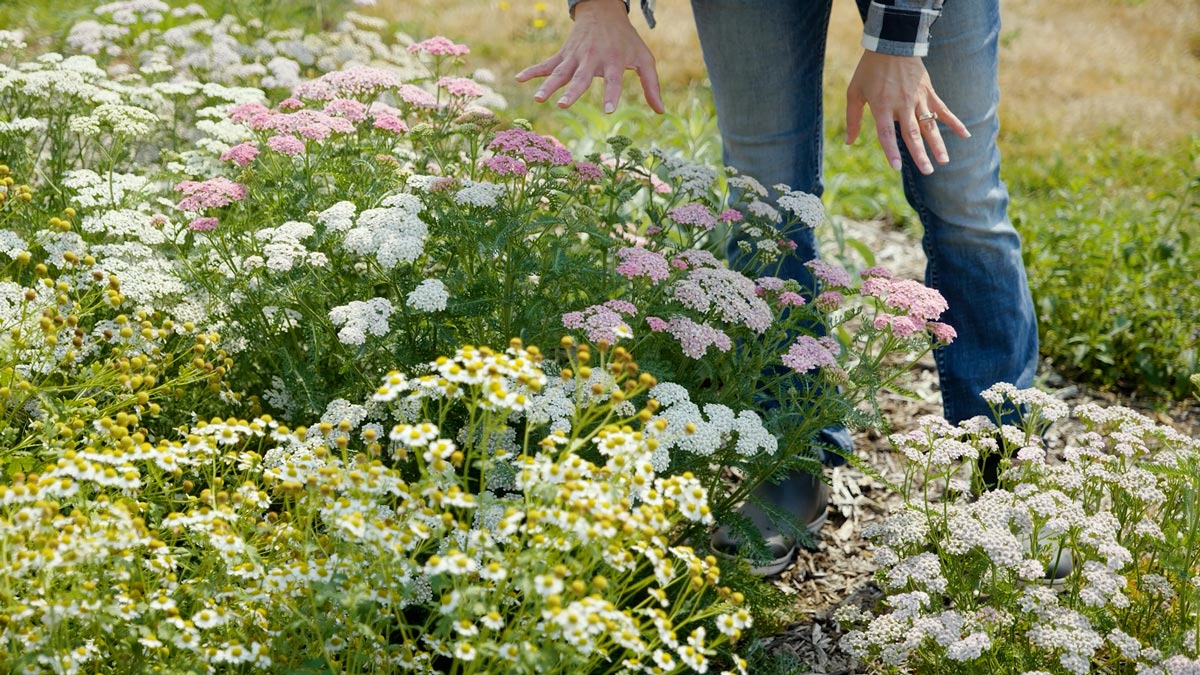
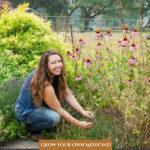
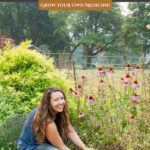
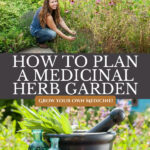
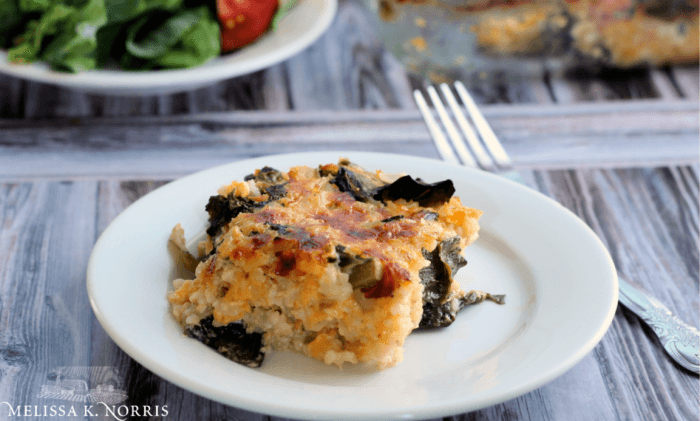
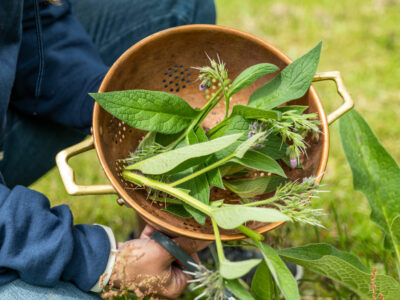
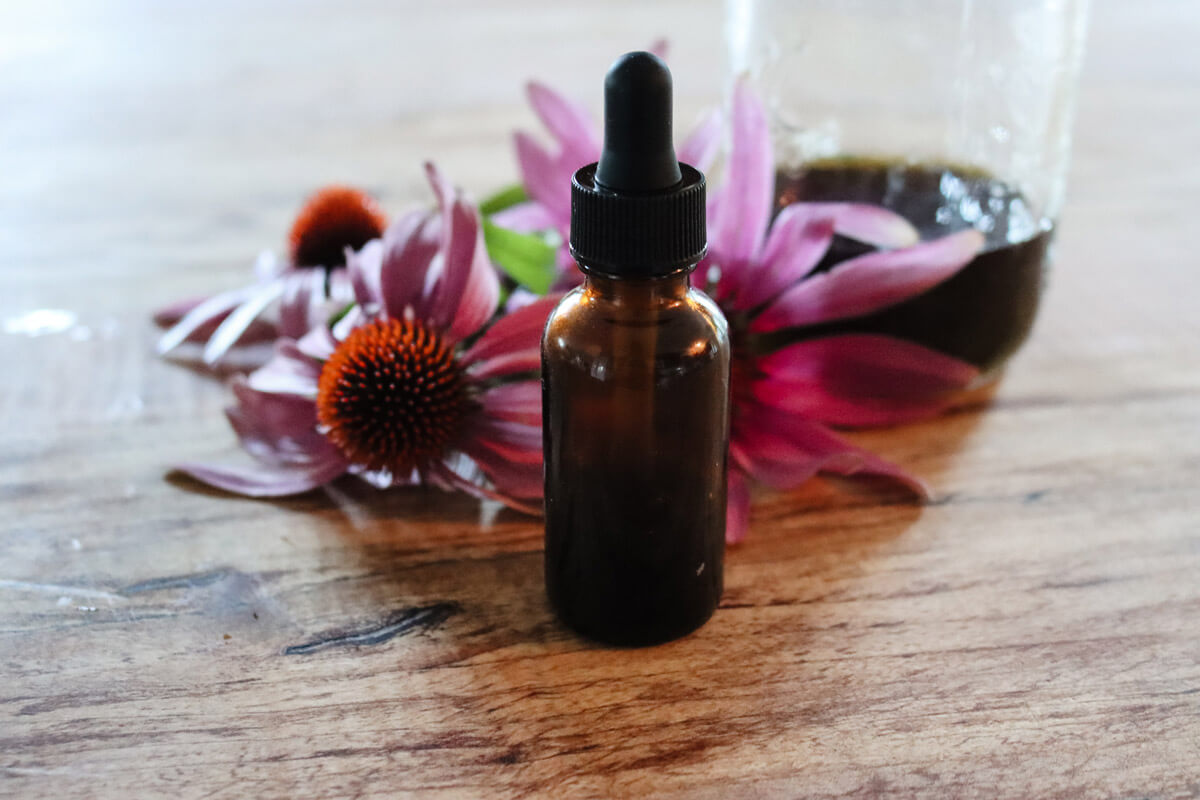
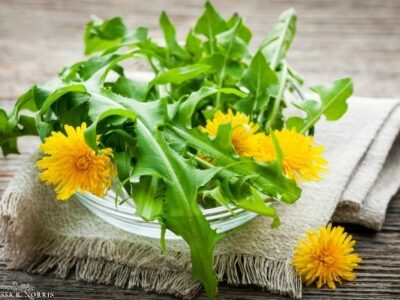
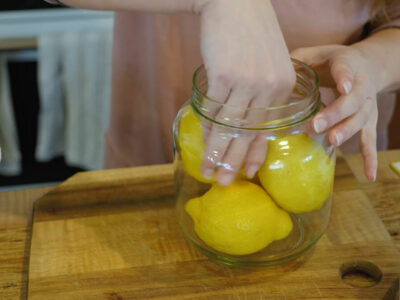
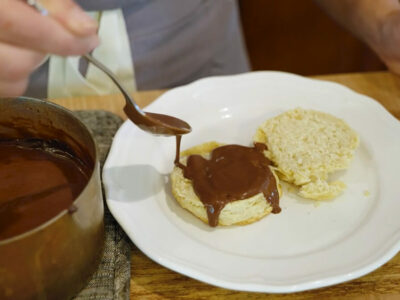
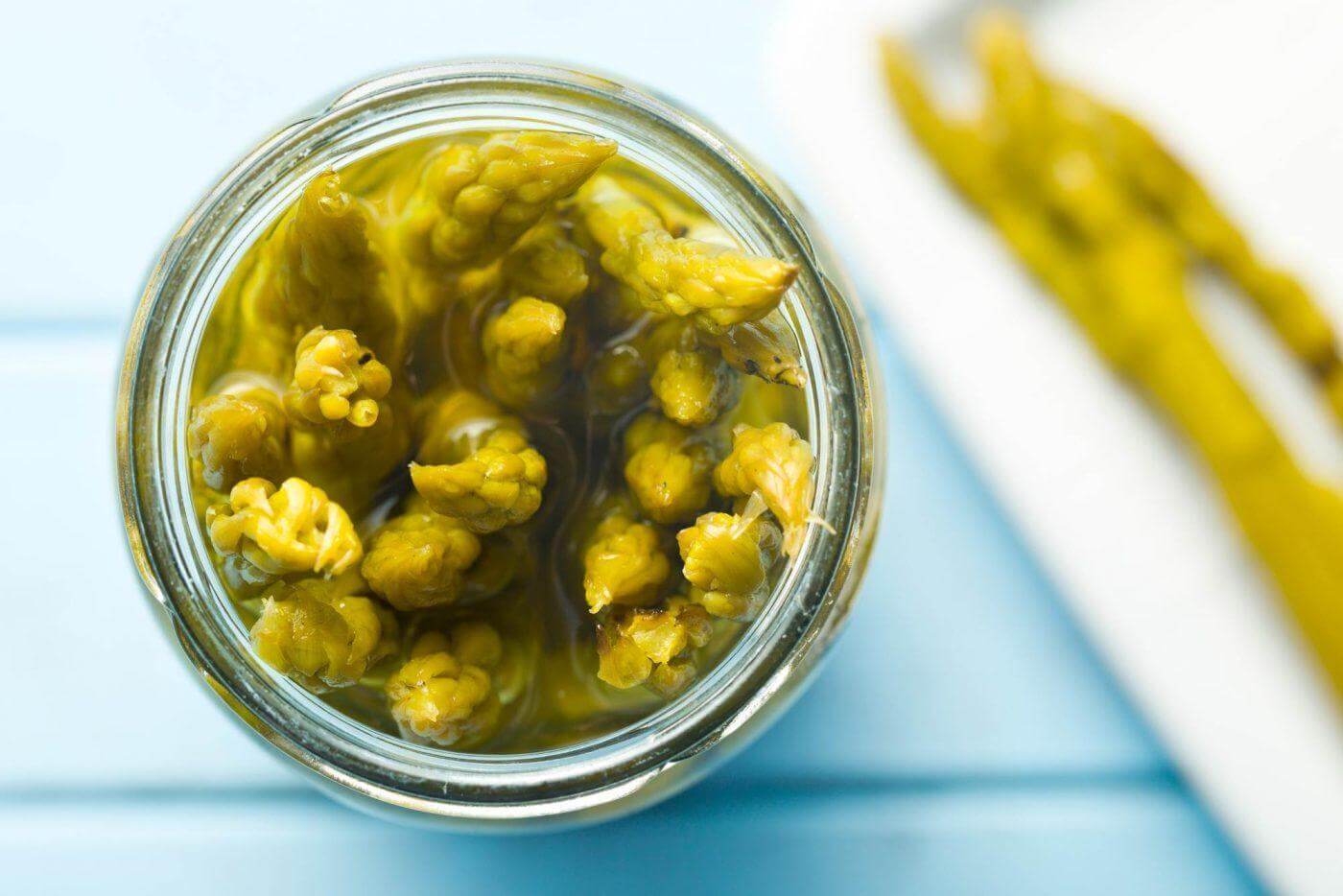
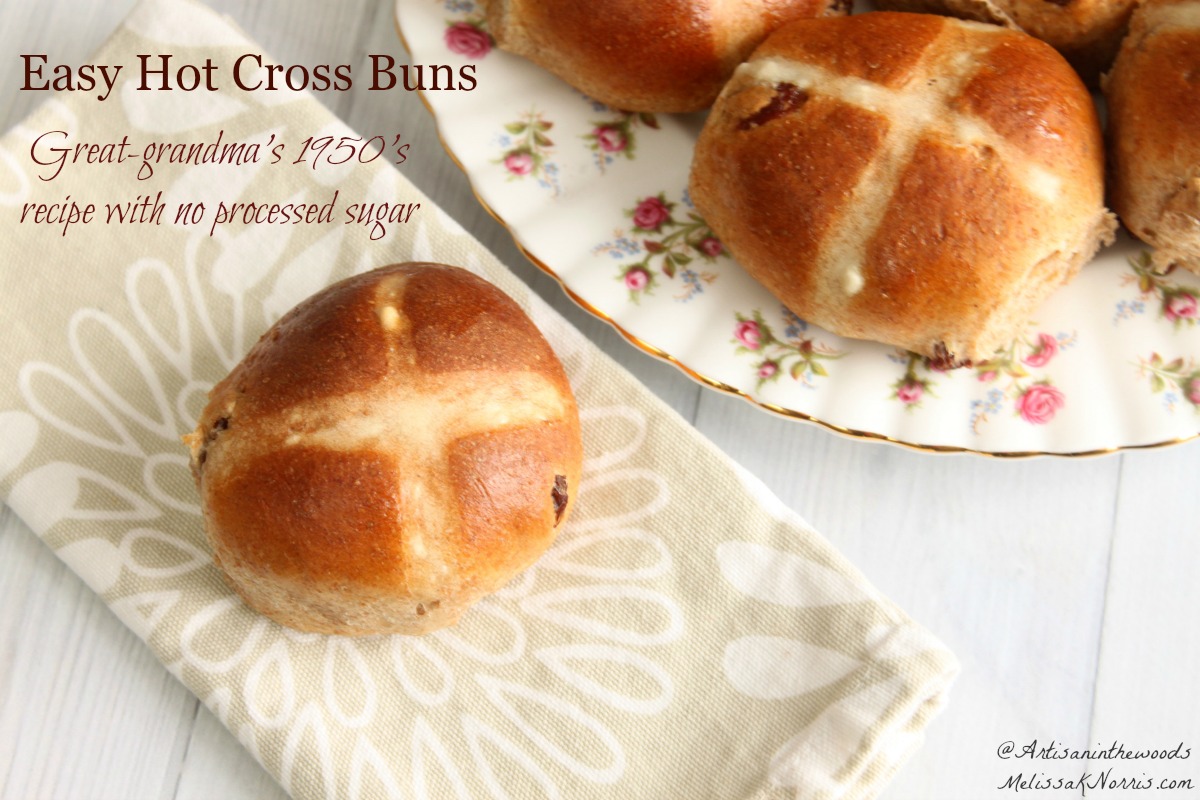
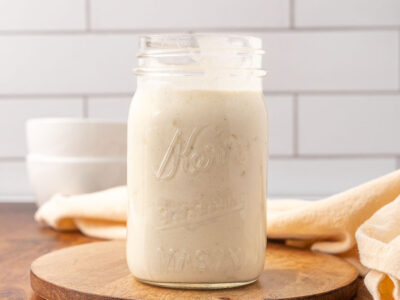
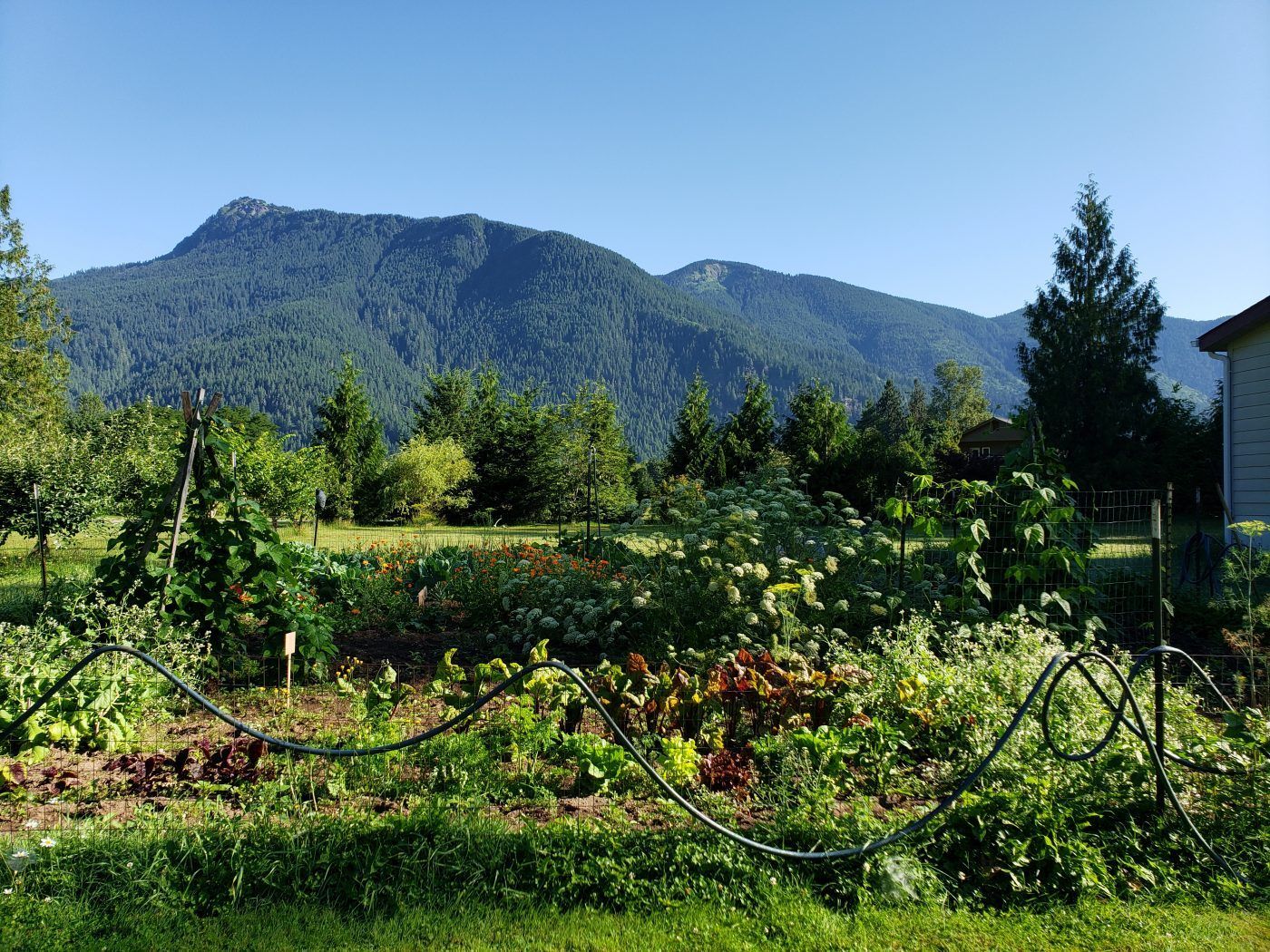
Hey 🙂 In the picture of you holding the little jar of herbs and the two flower packets, where did you find the little boxes that hold your flower/herb seed packages? Are those little boxes that fit inside of a bigger box? Thanks!
Hi Melissa! I have learned so much from you and I appreciate you! I could not find the link to the ebook you mentioned. Could you direct me? Thank you and God bless you!!
Yes, so sorry, we just got that updated, here’s the link https://melissa-norris.mykajabi.com/offers/JYYC88Bz/checkout
In the podcast you mention your ebook and it being 35% off right now. I don’t see a link to that anywhere. Thank you
Yes, here’s the link https://melissa-norris.mykajabi.com/offers/JYYC88Bz/checkout
The link to the charts is not working for me.
Hi Melissa, thank you for sharing what you learn. I’ve downloaded your herb chart pdf, but am confused by what is included in the chart versus your post. For example, your post has things like sage, bergamot, borage, etc and your chart has a smaller number of plants like poppies, sweet peas, calendula. Do you have them included together somewhere? Do you grow medicinals and cut flowers together? Thank you!